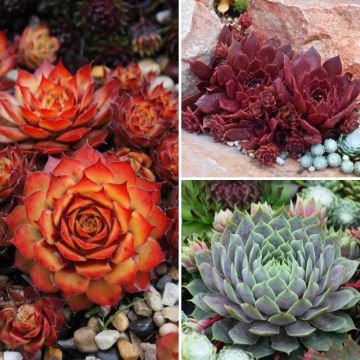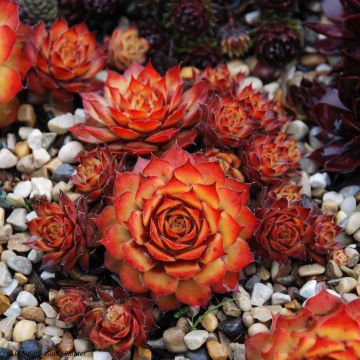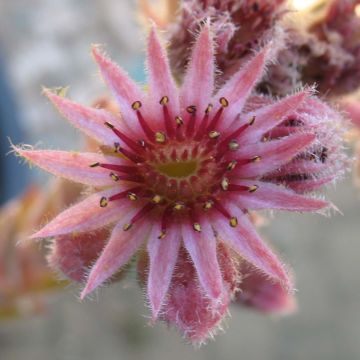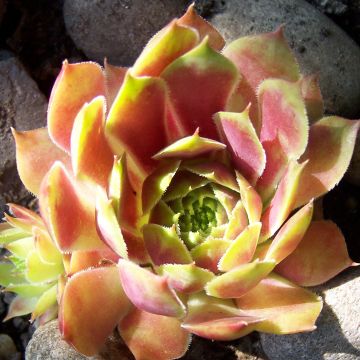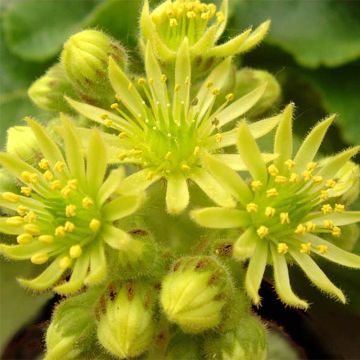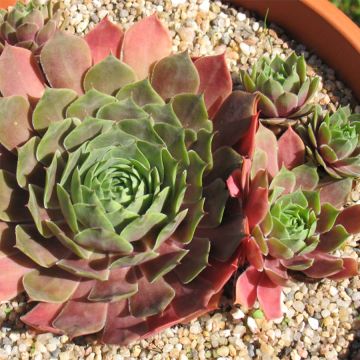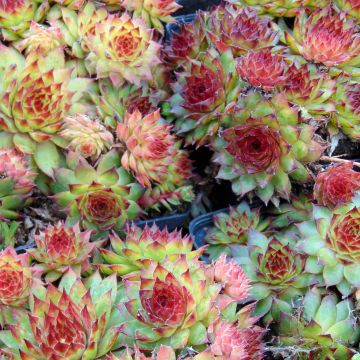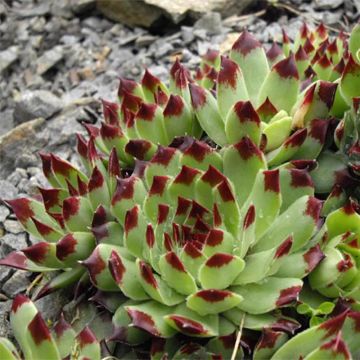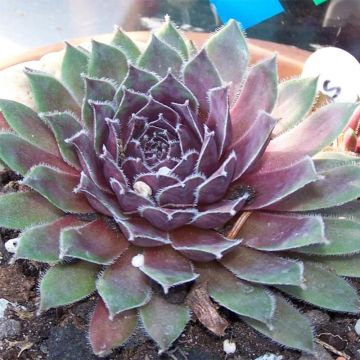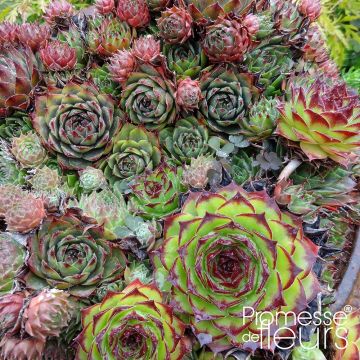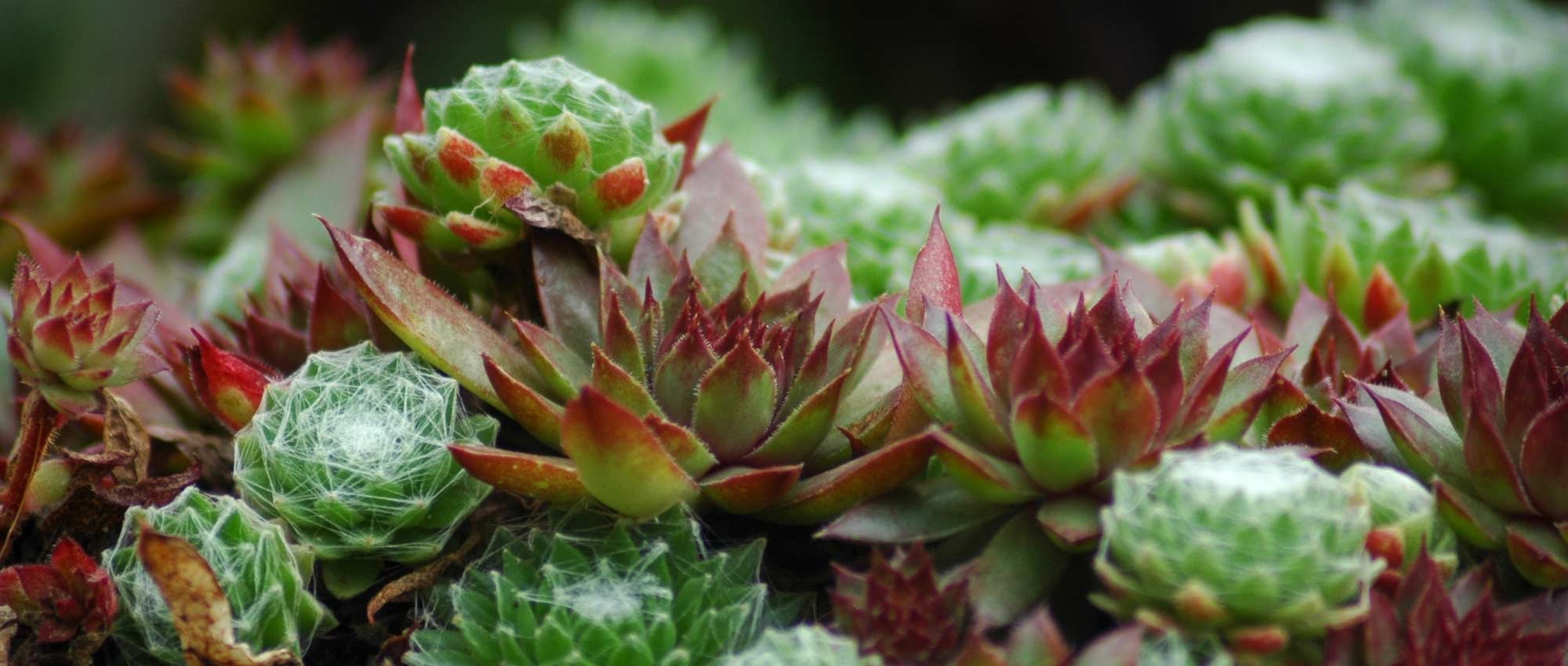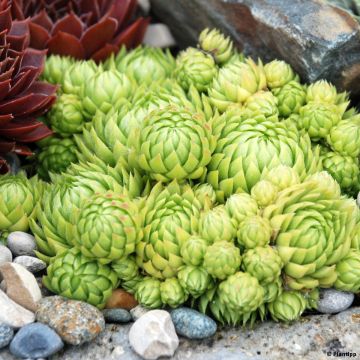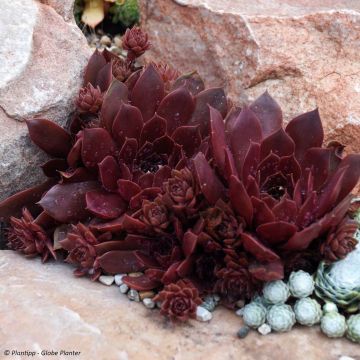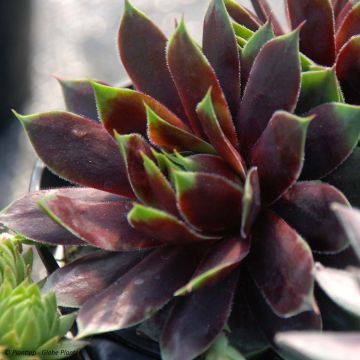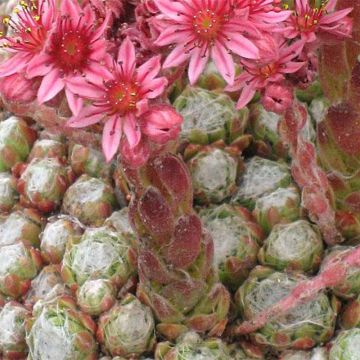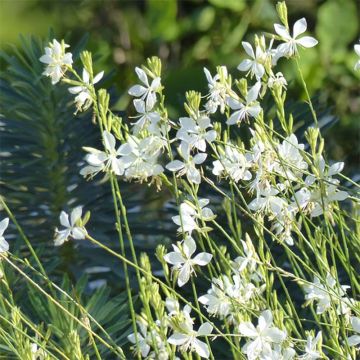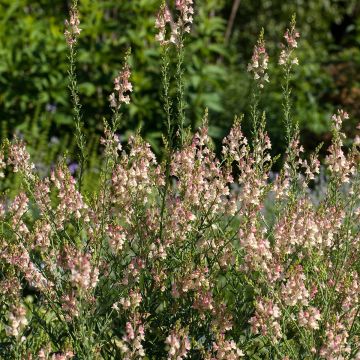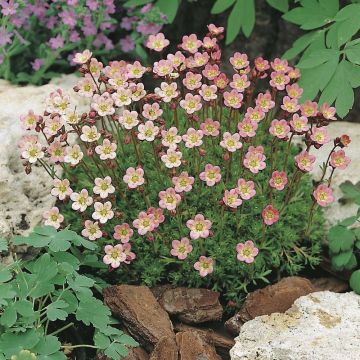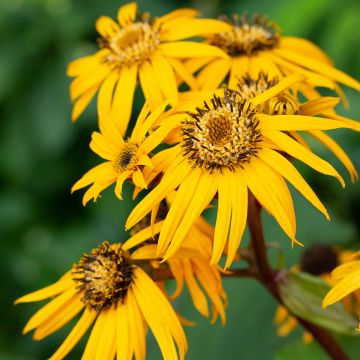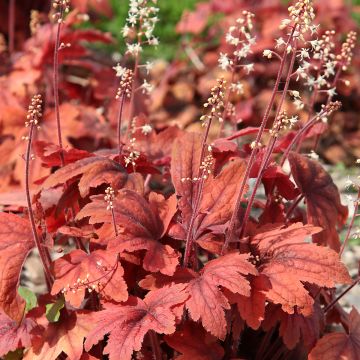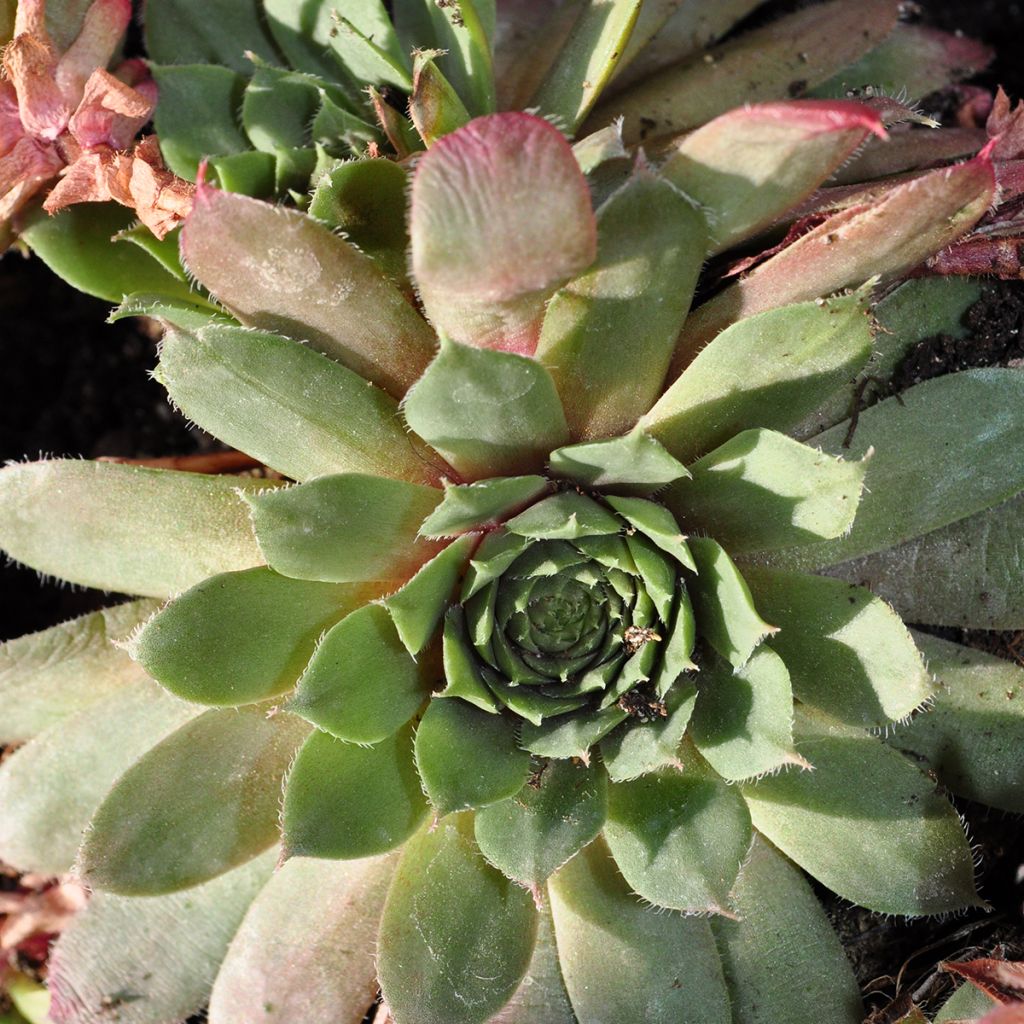

Sempervivum Santis - Joubarbe hybride
Sempervivum arachnoideum Santis
Sempervivum x arachnoideum Santis
Cobweb Houseleek
Special offer!
Receive a €20 voucher for any order over €90 (excluding delivery costs, credit notes, and plastic-free options)!
1- Add your favorite plants to your cart.
2- Once you have reached €90, confirm your order (you can even choose the delivery date!).
3- As soon as your order is shipped, you will receive an email containing your voucher code, valid for 3 months (90 days).
Your voucher is unique and can only be used once, for any order with a minimum value of €20, excluding delivery costs.
Can be combined with other current offers, non-divisible and non-refundable.
Why not try an alternative variety in stock?
View all →This plant carries a 12 months recovery warranty
More information
We guarantee the quality of our plants for a full growing cycle, and will replace at our expense any plant that fails to recover under normal climatic and planting conditions.
Would this plant suit my garden?
Set up your Plantfit profile →
Description
Sempervivum 'Santis' is a beautiful cultivar of the cobweb houseleek, a curious alpine species that has fine bristles forming a delicate veil on its rosettes. Underneath the shimmering bristles, 'Santis' leaves have a fairly dark red colour with a hint of acid green. The centre of the rosette, composed of very young leaves, is the same lime green. From the heart of the oldest rosettes emerges a small stem of pink to crimson star-shaped flowers with fleshy petals. They are particularly beautiful against the red foliage. Sempervivum is a small succulent plant ideal for arid and mineral areas that it covers with a geometric and colourful carpet. It requires nothing more than an open location. Without any maintenance, it survives almost without soil, in dry, poor, siliceous or limestone environment, and relies on rainwater, even if it is scarce.
Belonging to the Crassulaceae family, Sempervivum 'Santis' is proof that poor soil and a mineral backdrop can accommodate very pretty specimens with rich hues. Its ancestor is the cobweb houseleek. Quite variable in appearance, this species lives on rocks or in scree, dispersing its fine seeds in crevices and clinging to the smallest cracks to slowly form small colonies of rosettes of different sizes, juxtaposed. The rosettes of the 'Santis houseleek' are medium-sized (6 to 8cm (2 to 3in) in diameter). Over time, this plant can form a spreading carpet up to 40cm (16in) on the ground through its stoloniferous stems, perfectly conforming to the terrain. Resembling a small artichoke, each rosette is composed of numerous pointed leaves, without petioles, connected by a slight silky weaving in the centre. The white threads, stretched between the leaves, shine in the sun. The roots of this perennial are thick and long. They penetrate deeply into rock crevices, ensuring a good attachment to the walls while drawing water from deep below. Flowering appears on rosettes that are 2 or 3 years old, which will then disappear, having ensured their perpetuity by producing several small peripheral rosettes. The flowering stems develop in summer, formed by thick stems that bear 1 to 5 flowers with 8 to 10 pink petals and a purple median.
Sempervivum 'Santis' is ideal for areas in the garden where soil is scarce, in rockeries, above a wall, and in any mineral setting. If your soil is poor, rather dry, stony, rocky, or even slightly calcareous, you can still enjoy this hardy perennial (which withstands temperatures below -15°C (5°F)). It requires no maintenance and promises to bring life to any pile of stones, a wall, or even a green roof. Houseleeks are unusual and easy-to-care-for succulent plants that quickly become endearing. Their flowers and foliage with various hues create a desire to collect them, multiply them, and create amazing displays in the most inhospitable places. Their sculptural appearance is magnificent, especially in low "terrine" type pottery. They are irreplaceable in borders, troughs, or rockeries, in the company of wall bellflowers, paronychia, sedum, or Lewisia cotyledon. Consider choosing companions with staggered flowering times (Antennaria dioica, thymes, delosperma, ficoides, Euphorbia myrsinites) to create a variegated and joyful rockery.
Flowering
Foliage
Plant habit
Botanical data
Sempervivum
x arachnoideum
Santis
Crassulaceae
Cobweb Houseleek
Cultivar or hybrid
Other Sempervivum - Houseleek
View all →Planting and care
Sempervivum 'Santis' likes sunny or semi-shaded exposures, and perfectly drained, moist to dry and poor soils. You can plant it in the ground or in a container in spring or autumn, adding gravel or coarse sand to the planting substrate. Conversely, if you place it in a rock garden or on a wall, just give it a little compost to help it to establish. Afterwards, it will take care of itself.
If you want to propagate it, simply cut a few young rosettes and replant them elsewhere, burying the roots slightly. Take care of it by ensuring that it is not overwhelmed by taller plants, that it does not become covered in dead leaves or plant debris, and by removing any faded small inflorescences if necessary.
Planting period
Intended location
Care
Planting & care advice
This item has not been reviewed yet - be the first to leave a review about it.
Similar products
Haven't found what you were looking for?
Hardiness is the lowest winter temperature a plant can endure without suffering serious damage or even dying. However, hardiness is affected by location (a sheltered area, such as a patio), protection (winter cover) and soil type (hardiness is improved by well-drained soil).

Photo Sharing Terms & Conditions
In order to encourage gardeners to interact and share their experiences, Promesse de fleurs offers various media enabling content to be uploaded onto its Site - in particular via the ‘Photo sharing’ module.
The User agrees to refrain from:
- Posting any content that is illegal, prejudicial, insulting, racist, inciteful to hatred, revisionist, contrary to public decency, that infringes on privacy or on the privacy rights of third parties, in particular the publicity rights of persons and goods, intellectual property rights, or the right to privacy.
- Submitting content on behalf of a third party;
- Impersonate the identity of a third party and/or publish any personal information about a third party;
In general, the User undertakes to refrain from any unethical behaviour.
All Content (in particular text, comments, files, images, photos, videos, creative works, etc.), which may be subject to property or intellectual property rights, image or other private rights, shall remain the property of the User, subject to the limited rights granted by the terms of the licence granted by Promesse de fleurs as stated below. Users are at liberty to publish or not to publish such Content on the Site, notably via the ‘Photo Sharing’ facility, and accept that this Content shall be made public and freely accessible, notably on the Internet.
Users further acknowledge, undertake to have ,and guarantee that they hold all necessary rights and permissions to publish such material on the Site, in particular with regard to the legislation in force pertaining to any privacy, property, intellectual property, image, or contractual rights, or rights of any other nature. By publishing such Content on the Site, Users acknowledge accepting full liability as publishers of the Content within the meaning of the law, and grant Promesse de fleurs, free of charge, an inclusive, worldwide licence for the said Content for the entire duration of its publication, including all reproduction, representation, up/downloading, displaying, performing, transmission, and storage rights.
Users also grant permission for their name to be linked to the Content and accept that this link may not always be made available.
By engaging in posting material, Users consent to their Content becoming automatically accessible on the Internet, in particular on other sites and/or blogs and/or web pages of the Promesse de fleurs site, including in particular social pages and the Promesse de fleurs catalogue.
Users may secure the removal of entrusted content free of charge by issuing a simple request via our contact form.
The flowering period indicated on our website applies to countries and regions located in USDA zone 8 (France, the United Kingdom, Ireland, the Netherlands, etc.)
It will vary according to where you live:
- In zones 9 to 10 (Italy, Spain, Greece, etc.), flowering will occur about 2 to 4 weeks earlier.
- In zones 6 to 7 (Germany, Poland, Slovenia, and lower mountainous regions), flowering will be delayed by 2 to 3 weeks.
- In zone 5 (Central Europe, Scandinavia), blooming will be delayed by 3 to 5 weeks.
In temperate climates, pruning of spring-flowering shrubs (forsythia, spireas, etc.) should be done just after flowering.
Pruning of summer-flowering shrubs (Indian Lilac, Perovskia, etc.) can be done in winter or spring.
In cold regions as well as with frost-sensitive plants, avoid pruning too early when severe frosts may still occur.
The planting period indicated on our website applies to countries and regions located in USDA zone 8 (France, United Kingdom, Ireland, Netherlands).
It will vary according to where you live:
- In Mediterranean zones (Marseille, Madrid, Milan, etc.), autumn and winter are the best planting periods.
- In continental zones (Strasbourg, Munich, Vienna, etc.), delay planting by 2 to 3 weeks in spring and bring it forward by 2 to 4 weeks in autumn.
- In mountainous regions (the Alps, Pyrenees, Carpathians, etc.), it is best to plant in late spring (May-June) or late summer (August-September).
The harvesting period indicated on our website applies to countries and regions in USDA zone 8 (France, England, Ireland, the Netherlands).
In colder areas (Scandinavia, Poland, Austria...) fruit and vegetable harvests are likely to be delayed by 3-4 weeks.
In warmer areas (Italy, Spain, Greece, etc.), harvesting will probably take place earlier, depending on weather conditions.
The sowing periods indicated on our website apply to countries and regions within USDA Zone 8 (France, UK, Ireland, Netherlands).
In colder areas (Scandinavia, Poland, Austria...), delay any outdoor sowing by 3-4 weeks, or sow under glass.
In warmer climes (Italy, Spain, Greece, etc.), bring outdoor sowing forward by a few weeks.






























